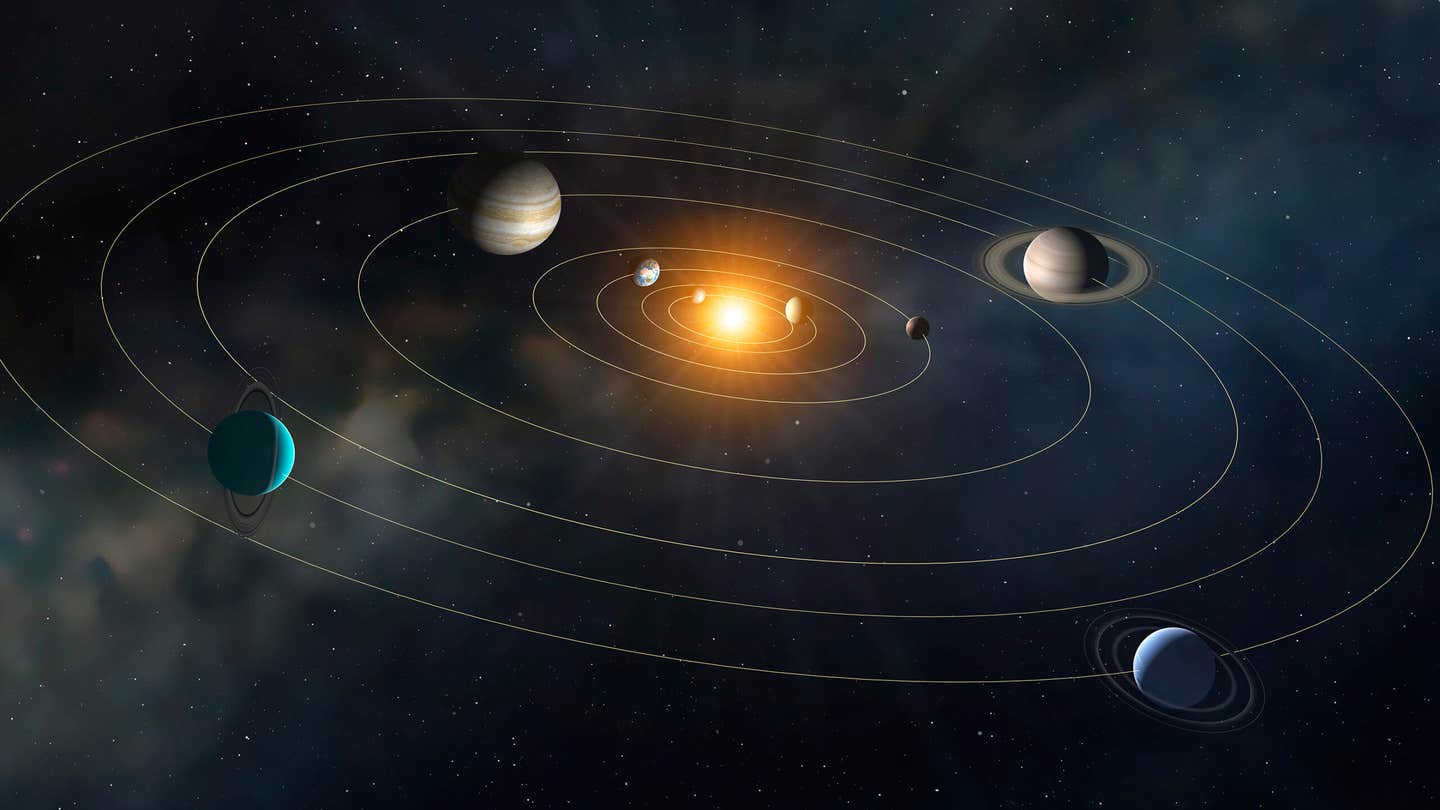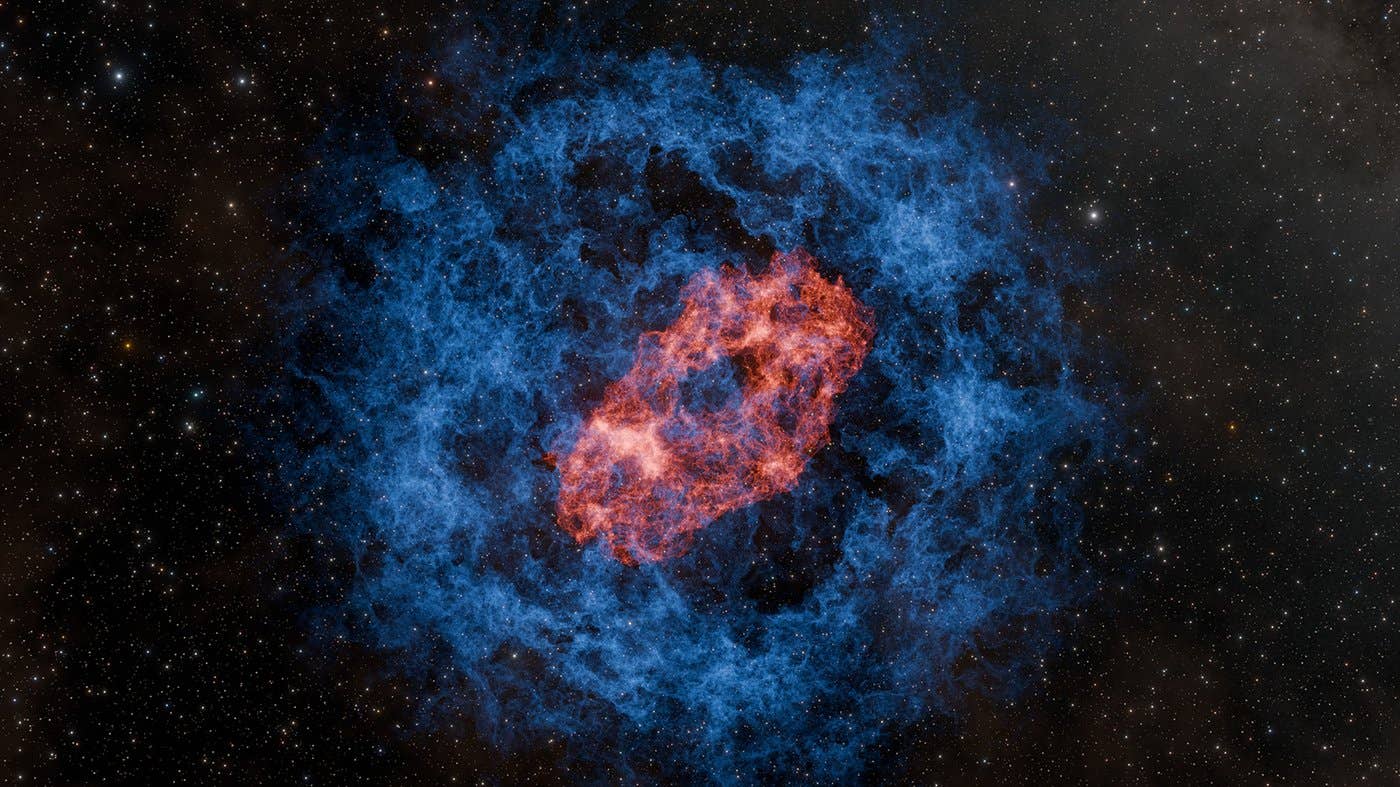New interstellar discovery reveals origin of our solar system
The mysteries of the cosmos continue to unravel, with scientists piecing together clues about the origins of our solar system.

PAHs are the likely carriers of the unidentified infrared (UIR) bands, which dominate the spectra of various galactic and extragalactic objects. (CREDIT: Mark Garlick / Science photo library via Getty Images)
The mysteries of the cosmos continue to unravel, with scientists piecing together clues about the origins of our solar system. Among these revelations, polycyclic aromatic hydrocarbons (PAHs) stand out. These carbon-rich molecules play a crucial role in the interstellar medium (ISM) and are central to understanding the chemistry of space.
PAHs are the likely carriers of the unidentified infrared (UIR) bands, which dominate the spectra of various galactic and extragalactic objects. These bright infrared features, spanning wavelengths from 3.3 to 12.7 micrometers, arise when PAHs absorb ultraviolet photons and fluoresce in infrared light.
The importance of PAHs in space goes beyond their spectral signatures. They influence the ionization balance in molecular clouds and contribute to neutral gas heating through the photoelectric effect. Their abundance—roughly one part in ten million relative to hydrogen—marks them as key players in the ISM's physics and chemistry. Yet, the identity of specific PAH molecules has eluded scientists due to the complexity of their infrared signatures.
Space-based observatories, from the Infrared Space Observatory to the cutting-edge James Webb Space Telescope (JWST), have expanded our understanding of PAHs. With JWST's unprecedented spatial resolution, researchers have begun to categorize PAH families across various astronomical environments, providing valuable insights into these enigmatic molecules.
The study of extraterrestrial PAHs took a leap forward with the discovery of these molecules in meteorites like Murchison and Orgueil, as well as in comet samples from NASA's Stardust mission. Recent samples from the asteroid Ryugu, brought back by the Hayabusa2 mission, have revealed diverse PAH formation pathways.
High-temperature conditions (above 1,000 K) produced three-ring PAHs like anthracene and phenanthrene, while low-temperature environments (around 10 K) yielded two- and four-ring PAHs such as naphthalene and pyrene.
Pyrene, in particular, has captured the interest of scientists. This four-ring molecule, abundant in Ryugu's samples, was recently detected in the cold Taurus Molecular Cloud (TMC-1) using radio astronomy. Unlike broad UIR bands, which blur the distinction between individual molecules, radio astronomy allows precise identification.
Related Stories
Molecules with permanent dipole moments emit narrow rotational spectra, creating unique "fingerprints" detectable by telescopes like the 100-meter Green Bank Telescope (GBT) in West Virginia.
Despite their prevalence, only five PAHs have been conclusively identified in space through their rotational spectra. Among these are CN-functionalized PAHs, which include cyanonaphthalene and cyanopyrene. The latter, an isomer of pyrene with a cyanide group, was recently detected in TMC-1. The cyanide substitution breaks pyrene's symmetry, enabling its radio detection.
Brett McGuire, a chemistry professor at MIT, highlights the significance of these findings. "We’re looking at the beginning and end of a journey. The same molecular signatures in cold clouds and asteroid samples point to a direct inheritance of material from interstellar space into our solar system."
The presence of pyrene in both TMC-1 and Ryugu supports the idea that interstellar clouds like TMC-1 serve as molecular reservoirs. As stars form, they incorporate this carbon-rich material, which later becomes part of planets, asteroids, and comets. The discovery of pyrene in TMC-1, where temperatures hover near absolute zero, also hints at PAH formation under extreme conditions.
In collaboration with Ilsa Cooke from the University of British Columbia, McGuire and his team synthesized cyanopyrene in the lab to confirm its spectral properties. These lab measurements matched the emissions observed in TMC-1, where cyanopyrene was found to comprise about 0.1% of the cloud's carbon.
Though seemingly small, this abundance underscores the molecule's significance. "One in every few hundred carbon atoms in TMC-1 is locked in pyrene," McGuire notes. "That’s an astonishing concentration for such a complex molecule."
This discovery sheds light on the vast carbon reservoir in space, estimated to include thousands of molecular species. Ewine van Dishoeck, a molecular astrophysics professor at Leiden Observatory, calls the findings "unexpected and exciting." She emphasizes their implications for understanding carbon's role in the cosmos and the diverse pathways of PAH formation.
Interstellar clouds like TMC-1 offer a glimpse into the processes that may have shaped our solar system. As dust and gas coalesce into larger bodies, these clouds eventually give birth to stars, planets, and smaller celestial objects. While the specific interstellar cloud that seeded our solar system remains a mystery, the discovery of pyrene in both TMC-1 and Ryugu strengthens the link between early cosmic chemistry and the building blocks of life.
Looking ahead, McGuire's team aims to search for even larger PAHs in TMC-1. They also plan to investigate whether pyrene formed within the cloud or originated from high-energy processes around dying stars.
The journey of PAHs, from interstellar space to the rocky bodies of our solar system, offers a compelling narrative of molecular inheritance, bridging the gap between cosmic origins and terrestrial life.
Note: Materials provided above by The Brighter Side of News. Content may be edited for style and length.
Like these kind of feel good stories? Get The Brighter Side of News' newsletter.



